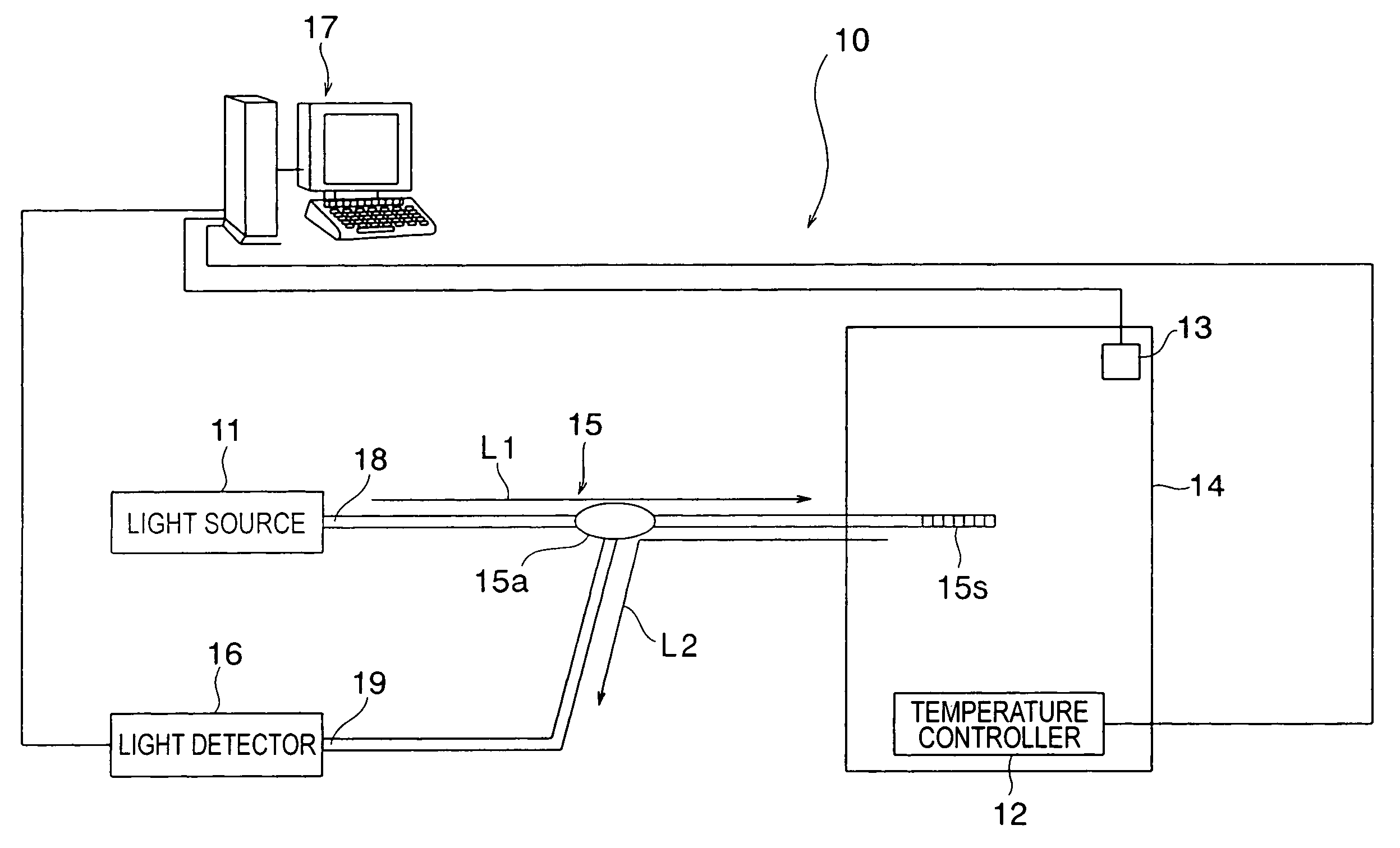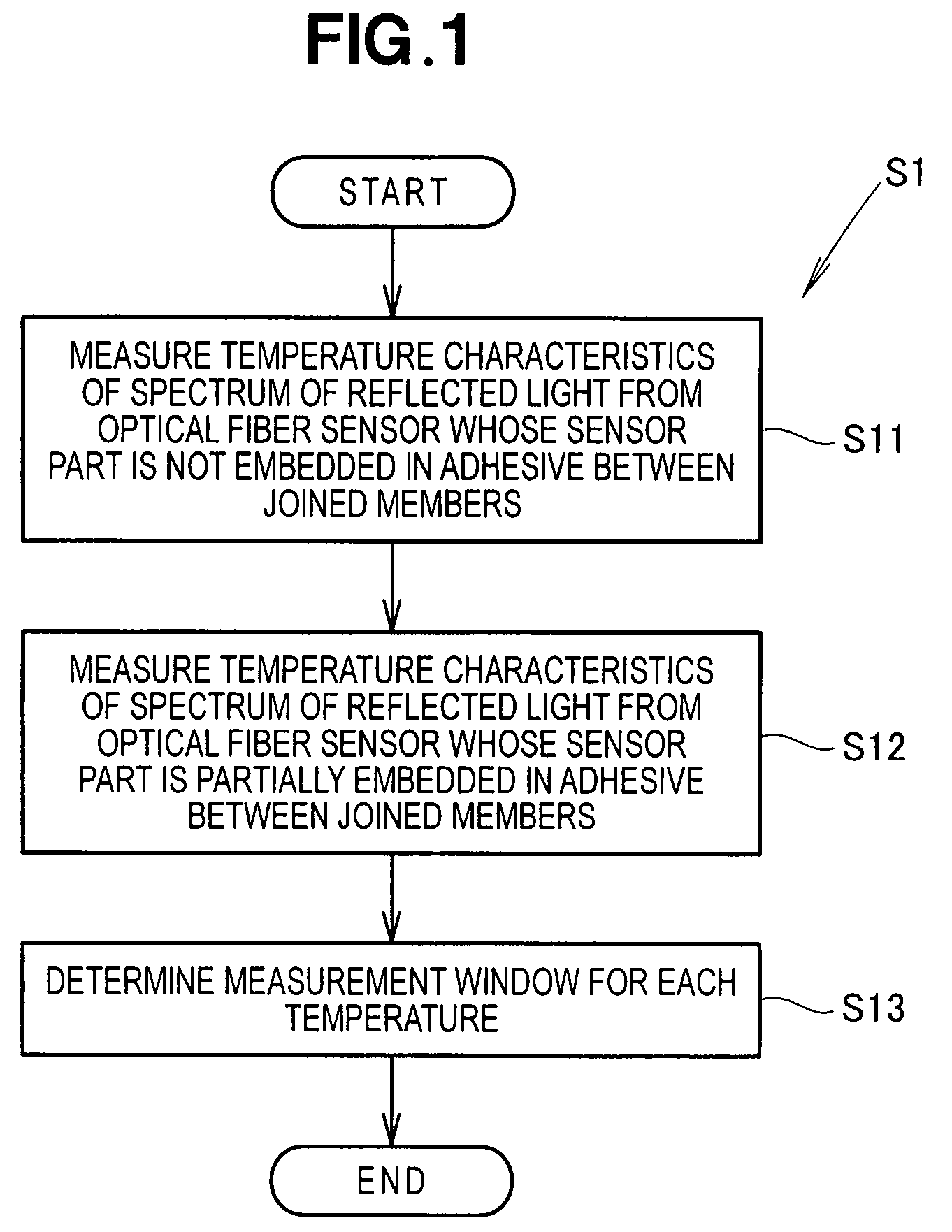Method for inspecting peeling in adhesive joint
a peeling and adhesive joint technology, applied in the direction of optical apparatus testing, force measurement by measuring optical property variation, instruments, etc., can solve the problems of difficult inspection without oversight, increase in the number of steps, and difficult peeling detection, so as to achieve accurate conclusion, easy measurement, and easy inspection of peeling in the adhesive joint
- Summary
- Abstract
- Description
- Claims
- Application Information
AI Technical Summary
Benefits of technology
Problems solved by technology
Method used
Image
Examples
Embodiment Construction
[0040]The method for inspecting peeling in an adhesive joint according to an embodiment of the present invention comprises a database creation step (step S1 shown in FIG. 1) for creating data related to the spectrum of reflected light in relation to temperature and obtained both from an optical fiber sensor whose sensor part is embedded in an adhesive in joined members composed of two members joined using the adhesive, and from an optical fiber sensor whose sensor part is not embedded in the adhesive; and a peeling inspection step (step S2 shown in FIG. 10) related to actual peeling in the adhesive joint. The database creation step and the peeling inspection step are described hereinbelow with reference to the drawings.
[0041]The database creation step S1 is described with reference to the flowchart in FIG. 1. The database creation step S1 has a measuring step S11 for measuring the temperature characteristics of the spectrum of reflected light from a free optical fiber sensor whose s...
PUM
| Property | Measurement | Unit |
|---|---|---|
| peak wavelength | aaaaa | aaaaa |
| length | aaaaa | aaaaa |
| length | aaaaa | aaaaa |
Abstract
Description
Claims
Application Information
 Login to View More
Login to View More - R&D
- Intellectual Property
- Life Sciences
- Materials
- Tech Scout
- Unparalleled Data Quality
- Higher Quality Content
- 60% Fewer Hallucinations
Browse by: Latest US Patents, China's latest patents, Technical Efficacy Thesaurus, Application Domain, Technology Topic, Popular Technical Reports.
© 2025 PatSnap. All rights reserved.Legal|Privacy policy|Modern Slavery Act Transparency Statement|Sitemap|About US| Contact US: help@patsnap.com



